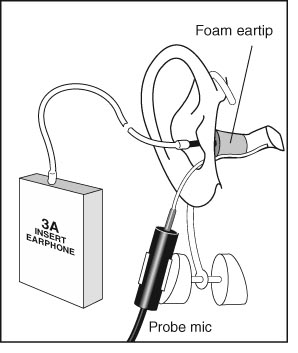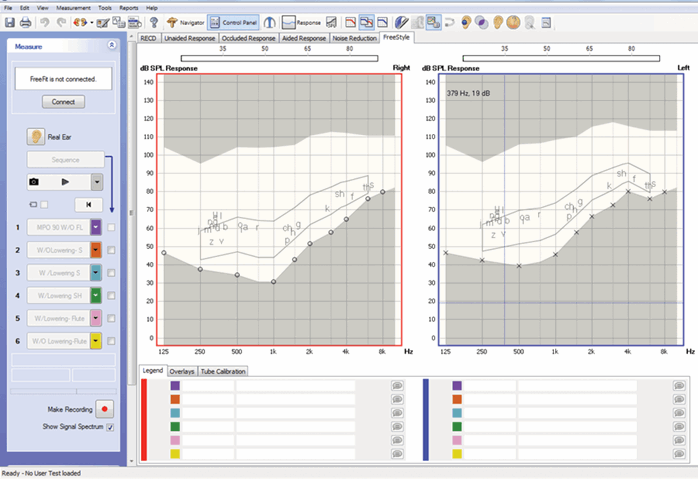Real Ear Measurements – Why Are They So Important?
When you’re first fitted with your hearing aid, the clinician will run a few checks on the device. Firstly they’ll carry out ‘real ear’ measurements. This is where they check that the hearing aid is working in your ear to the prescribed specifications. It doesn’t take long and should be carried out to ensure the hearing aid is working to the prescription.
So what are ‘Real Ear Measurements’ (or REMs)? Basically they’re electronic measurements of the hearing aid as it sits in your ear. These are made to verify if the prescription devised for your hearing levels is being met by the hearing aid. This means your hearing clinician is measuring how well the hearing aids have been programmed for your hearing loss.
REMs are the only way to verify that the hearing aid is doing its job.
There are two different ways to run REMs. Both types of REMs will have you sitting in front of a speaker and require thin probes placed in your ears.
Protocol 1: Insertion Gain
For Insertion Gain REMs, the thin probe is placed in your ear and sits approximately where your hearing aid is seated. Your clinician will run a short sound burst through the speaker and measure your ear canal resonance, without the hearing aid in your ear. Everyone’s ear is different (we could use our ear instead of fingerprints as we all have our own individual shape!) and Insertion Gain uses this information when verifying your hearing aid’s ability to meet prescription targets.
Once unaided measurements are taken, your hearing aid will be placed in your ear, with the probe still in place, and the same short sound burst will be played. The technology in the Insertion Gain program will take into account your natural ear canal resonance, from the first measurement, and then calculate the hearing aid output, as it is performing in your ear.


Protocol 2: Live Speech Mapping
Live Speech Mapping uses a speech stimulus to measure how the hearing aid is performing in the ear. A pre-recorded ‘speech babble’ can be used, or the actual voice of someone close to you (spouse, family member, friend). This is an excellent method for your significant others to see how the hearing aid is reacting to their voice in your ear – it involves them in the process. For this method, the first measurement of just the ear canal qualities without the hearing in, is not required. Live Speech Mapping is usually the preferred REM taken, as all of the adaptive features on the hearing aid can be active during the measurement.

What does it all mean?
For both of these protocols, results are displayed for you on a screen, so you can watch your clinician make adjustments and see how your hearing aid is actually working.
Once the sound run is made, with the hearing aid in your ear, the clinician will determine if the output of the hearing aid is meeting the prescriptive target. If it’s not, they will make some adjustments to the hearing aid to improve its performance in your ear. You will be asked if you like the sound of the adjustments to your hearing aid’s programming. For example, if your hearing aid is meeting the prescribed target but it sounds too loud, tinny, or echoey, you need to tell the clinician so they can make adjustments to improve the sound of the hearing aid for you.
When both you, and your clinician are satisfied with the result of the REMs, you will be ready to wear your hearing aids. Once you’ve worn your hearing aids for a while, return for a follow-up visit and let your clinician know if you have any problems. They may ask you validating questions, or carry out other speech tests on you, with and without your hearing aids in. From your reporting, your clinician may need to make further adjustments and perhaps run the REMs again. This is all part of the verification and validation process of your hearing aids – and helps to ensure you will have success with them. This is a vital part of the fitting process and you should always ensure your clinician carries out REMs on your hearing aids.
Need Help With Hearing Aids?


